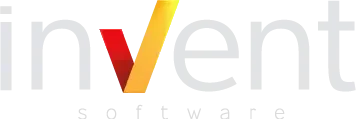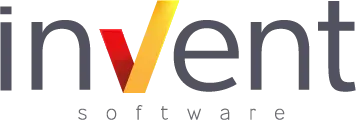Are you having difficulty comparing the sales movements that are in your company's system with those recorded in your bank statement? So continue reading to find out what bank reconciliation is, how it enhances companies and what the 4 points of attention are in reconciliation.
What is Bank Reconciliation?
By concept, Bank Reconciliation is the checking of the balance of a bank account, comparing all of its debit and credit transactions recorded in the system, with external information (Bank Statement) on a given date.
Let's simplify this concept. Imagine that you are a software developer and the company you work for accepts online payments through different channels, such as credit cards, bank transfers and digital wallets.
In this scenario, Bank reconciliation works as a process of joining your company's financial records with the transactions recorded by the bank. This involves automating the comparison of data between your payment system and bank records, thus ensuring that all transactions make sense. It’s like validating that the data in your system and the data in the bank are in harmony.
In general, this procedure can be considered an internal control tool and is essential to prevent errors and fraud, in addition to providing knowledge of your company's finances. In some cases, bank reconciliation is even requested by the auditors to verify certain aspects of a company's financial transactions.
How to do Bank Reconciliation?
The preparation of the bank reconciliation should be based on the recognition of all entries and exits of the company, observing its particularities, such as, for example, the registration in separate control sheets of post-dated checks issued, as well as those that were received with this same condition.
If some entries do not appear registered, there is no need to worry. It is important to note that some banking institutions have a time limit for clearing deposits received, which may result in some differences between what is registered in your internal control and what is on your bank statement.
That is, after comparing theaccounting balancewith thebank statement balance, if there are differences, they must be represented by the particularities presented in the Bank Reconciliation, such as checks not yet cleared and blocked deposits.
And if there are still differences, you need to check the movement carefully, checking that no duplicate entries have been made, if records have been forgotten or if there are controls on amounts not yet received or paid.
4 Points to Consider for your Bank Reconciliation
Is your management still manual and do you have problems with reconciliation in SAP B1?
Follow our 4 points of attention to avoid this problem:
#01: Keep your reconciliation up to date
For Bank Reconciliation to be effective, it must be timely, that is, it is launched and updated, preferably, daily.
#02: In case of disagreements, justify what occurred in the conciliation
There may be differences between the statement and what is recorded in the accounting records. In this situation, it will be necessary to justify such discrepancies, allowing all entries to be understood. And if there are still unexplained differences, these values must be highlighted so that they can be resolved in the future.
#03: Change your Reconciliation and Statement Issuance Manager
Assuming that the Bank Reconciliation was done within the company's treasury, it is important to plan the segregation of functions within the company. To this end, in order to avoid errors or fraud in the process, it should be carried out by a person other than the one who makes the deposits or even the one who issues the statements.
#04: Ensure accounting documents are archived
Caution is also needed when filing and using accounting documents that can prove the transaction — these can be invoices, payment slips, contracts and others that are accepted by accounting as evidence of the operations.
But do you know how to stop wasting time on financial transactions? Discover BankPlus:
I have carefully reconciled my income and expenses. What now?
By completing this action with care and attention, you guarantee several benefits for your company.
In addition to preventing errors and fraud, which allows greater financial control of your business, Bank Reconciliation supports another important tool: Cash Flow, which account with bank balances that represent the company's cash equivalents.
This flow, when prepared correctly and in an updated manner, supported by reconciliation, also makes it possible to know the values available for the company's needs.
But, in addition to these benefits, conciliation also stands out when it comes to preparing business planning and budgeting, allowing for analysis of trends and projections for the future of your company.
In these reconciliation analyses, it becomes possible to understand the evolution of your basket of services and fees, and which, depending on your movement and length of relationship with the bank, can be used to negotiate better conditions and rates.
3 Advantages of Bank Reconciliation for your Financial Control
Do you want to understand bank reconciliation? We have listed other benefits that this BankPlus feature brings to your financial control:
1. Detailing Resource Inputs and Outputs: it helps with your company's financial control and can be used as a source of detail on inflows and outflows of resources. With this information in hand, you can make decisions about how to manage your cash flow and ensure that resources are being used effectively.
2. Reconciliation of Card Sales: conciliation stands out for those companies that make sales using cards, since it is necessary to cross-reference the information in the receipt reports sent by the operators with what was actually part of your bank transactions in a given period. This ensures that all card transactions are properly recorded and reconciled, avoiding financial losses due to inconsistencies in the records.
3. Movement Control: this function allows the amounts moved in your business to be reconciled and, consequently, controlled more closely by you, not just by your bank, which results in greater autonomy and confidence in the numbers presented.
When is it time to automate my Reconciliation?
If you are spending TOO MUCH TIME reconciling the company's internal control and the bank statement, it is time to opt for Automatic Reconciliation.
To ensure agility in this activity, we recommend that know the BankPlus, our high-performance financial manager that automates banking processes.
With BankPlus, you can count on reliable and highly detailed Bank Reconciliation for each audit process, for example. Discover the other features of our banking solution:
- Importing Bank Statement: BankPlus makes it easy to import bank statements, making the reconciliation process more efficient and less prone to errors. This functionality saves time and ensures that all the necessary information is available for review.
- Automation of Manual Accounting Entries for fees, IOF and other transactions not recorded in SAP: BankPlus simplifies the task of manually recording fees, Financial Transaction Tax (IOF) and other transactions that are not automatically recorded in the company's accounting system (SAP). This prevents the omission of important information and ensures the accuracy of accounting records.
- Automatic Reconciliation: is a key feature of BankPlus. It automates the reconciliation process between the company’s internal records and the bank statement, saving time and reducing the likelihood of human error. This allows the finance team to focus on more strategic tasks.
- Automation of Bank Statement Import and Processing by the Service: BankPlus offers the convenience of automating the import and processing of bank statements through an efficient service. This ensures that data is always up-to-date and ready for analysis, facilitating informed decision-making.
In other words, if your management is still manual and you have problems with reconciliation, this is the time to get to know BankPlus and our features. Want to know more about how we can streamline your banking operations? Click here and talk to an expert!
And if you liked the article, how about sharing it with your friends on social media? 😀




